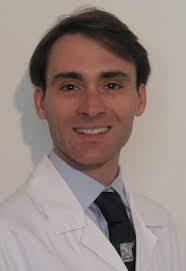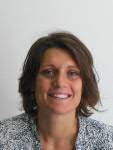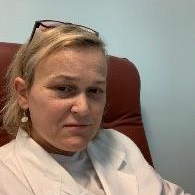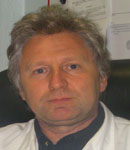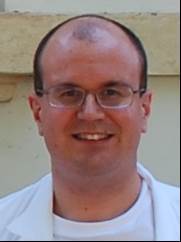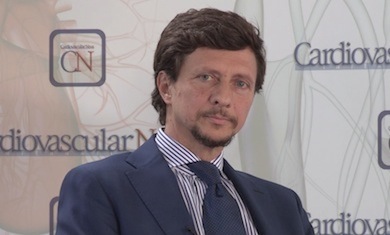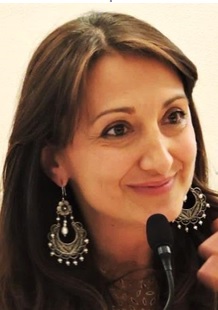Studying at the University of Verona
Here you can find information on the organisational aspects of the Programme, lecture timetables, learning activities and useful contact details for your time at the University, from enrolment to graduation.
Academic calendar
The academic calendar shows the deadlines and scheduled events that are relevant to students, teaching and technical-administrative staff of the University. Public holidays and University closures are also indicated. The academic year normally begins on 1 October each year and ends on 30 September of the following year.
Course calendar
The Academic Calendar sets out the degree programme lecture and exam timetables, as well as the relevant university closure dates..
| Period | From | To |
|---|---|---|
| 1° e 2° semestre (corsi annuali) PROFESSIONI SANITARIE | Oct 1, 2021 | Sep 30, 2022 |
| 1 SEMESTRE PROFESSIONI SANITARIE | Oct 1, 2021 | Dec 23, 2021 |
| 2 SEMESTRE PROFESSIONI SANITARIE | Jan 10, 2022 | Sep 30, 2022 |
| Session | From | To |
|---|---|---|
| 1^ SESSIONE A.A. 2020/2021 | Oct 1, 2021 | Nov 30, 2021 |
| 2^ SESSIONE A.A. 2020/2021 | Mar 1, 2022 | Apr 30, 2022 |
| Period | From | To |
|---|---|---|
| Festa di Tutti i Santi | Nov 1, 2021 | Nov 1, 2021 |
| Festa dell'Immacolata Concezione | Dec 8, 2021 | Dec 8, 2021 |
| Festa della Liberazione | Apr 25, 2022 | Apr 25, 2022 |
| Festa di San Zeno - S. Patrono di Verona | May 21, 2022 | May 21, 2022 |
| Festa della Repubblica | Jun 2, 2022 | Jun 2, 2022 |
Exam calendar
Exam dates and rounds are managed by the relevant Medicine Teaching and Student Services Unit.
To view all the exam sessions available, please use the Exam dashboard on ESSE3.
If you forgot your login details or have problems logging in, please contact the relevant IT HelpDesk, or check the login details recovery web page.
Should you have any doubts or questions, please check the Enrollment FAQs
Academic staff
 elisabetta.allegrini@aovr.veneto.it
elisabetta.allegrini@aovr.veneto.it
 michele.bertani@univr.it
michele.bertani@univr.it
 federica.bonato@aor.veneto.it
federica.bonato@aor.veneto.it
 elena.carrara@univr.it
elena.carrara@univr.it
Cunico Laura
 laura.cunico@univr.it
laura.cunico@univr.it
 raffaele.cutolo@univr.it
raffaele.cutolo@univr.it
 0444752922
0444752922
 stefania.danese@univr.it
stefania.danese@univr.it
 francesca.defanti@univr.it
francesca.defanti@univr.it
 serena.demichelis@univr.it
serena.demichelis@univr.it
 stefano.detogni@univr.it
stefano.detogni@univr.it
 massimo.dibenedetto@univr.it
massimo.dibenedetto@univr.it
 giulia.guglielmi@univr.it
giulia.guglielmi@univr.it
 jessica.longhini@univr.it
jessica.longhini@univr.it
 laura.messina@univr.it
laura.messina@univr.it
 loredana.pancheri@univr.it
loredana.pancheri@univr.it
 sara.pilotto@univr.it
sara.pilotto@univr.it
 zenogabriele.poli@univr.it
zenogabriele.poli@univr.it
 er.vedovi@virgilio.it
er.vedovi@virgilio.it
 tamara.zerman@univr.it
tamara.zerman@univr.it
 lzivelonghi@aulss9.veneto.it
lzivelonghi@aulss9.veneto.it
Study Plan
The Study Plan includes all modules, teaching and learning activities that each student will need to undertake during their time at the University.
Please select your Study Plan based on your enrollment year.
1° Year
| Modules | Credits | TAF | SSD |
|---|
Pathophysiology applied at Nursing
Biomolecular fondamentals of life
Morphological and functional fundamentals of life
General and methodological nursing
Health and safety promotion
English for Nursing
Clinical practice (1st year)
2° Year activated in the A.Y. 2022/2023
| Modules | Credits | TAF | SSD |
|---|
Application of diagnostic and therapeutic processes
Chronic clinical nursing care
Clinical nursing care in surgical area
Clinical nursing care in medical area
Relationship in nursing care
Clinical practice (2nd year)
3° Year activated in the A.Y. 2023/2024
| Modules | Credits | TAF | SSD |
|---|
Maternal and paediatric nursing care
Critical nursing care
Evidence based nursing
Health organizations and care processes
Legal, bioethic and deontological principles of professional practice
Clinical practice (3rd year)
Corso di Rianimazione di Base con utilizzo del defibrillatore semiautomatico
- Corso di Rianimazione di Base con utilizzo del defibrillatore semiautomatico [Gruppo 1]
- Corso di Rianimazione di Base con utilizzo del defibrillatore semiautomatico [Gruppo 2]
- Corso di Rianimazione di Base con utilizzo del defibrillatore semiautomatico [Gruppo 3]
- Corso di Rianimazione di Base con utilizzo del defibrillatore semiautomatico [Gruppo 4]
- Corso di Rianimazione di Base con utilizzo del defibrillatore semiautomatico [Gruppo 5]
- Corso di Rianimazione di Base con utilizzo del defibrillatore semiautomatico [Gruppo 6]
- Corso di Rianimazione di Base con utilizzo del defibrillatore semiautomatico [Gruppo 7]
- Corso di Rianimazione di Base con utilizzo del defibrillatore semiautomatico [Gruppo 8]
| Modules | Credits | TAF | SSD |
|---|
Pathophysiology applied at Nursing
Biomolecular fondamentals of life
Morphological and functional fundamentals of life
General and methodological nursing
Health and safety promotion
English for Nursing
Clinical practice (1st year)
| Modules | Credits | TAF | SSD |
|---|
Application of diagnostic and therapeutic processes
Chronic clinical nursing care
Clinical nursing care in surgical area
Clinical nursing care in medical area
Relationship in nursing care
Clinical practice (2nd year)
| Modules | Credits | TAF | SSD |
|---|
Maternal and paediatric nursing care
Critical nursing care
Evidence based nursing
Health organizations and care processes
Legal, bioethic and deontological principles of professional practice
Clinical practice (3rd year)
Corso di Rianimazione di Base con utilizzo del defibrillatore semiautomatico
- Corso di Rianimazione di Base con utilizzo del defibrillatore semiautomatico [Gruppo 1]
- Corso di Rianimazione di Base con utilizzo del defibrillatore semiautomatico [Gruppo 2]
- Corso di Rianimazione di Base con utilizzo del defibrillatore semiautomatico [Gruppo 3]
- Corso di Rianimazione di Base con utilizzo del defibrillatore semiautomatico [Gruppo 4]
- Corso di Rianimazione di Base con utilizzo del defibrillatore semiautomatico [Gruppo 5]
- Corso di Rianimazione di Base con utilizzo del defibrillatore semiautomatico [Gruppo 6]
- Corso di Rianimazione di Base con utilizzo del defibrillatore semiautomatico [Gruppo 7]
- Corso di Rianimazione di Base con utilizzo del defibrillatore semiautomatico [Gruppo 8]
Legend | Type of training activity (TTA)
TAF (Type of Educational Activity) All courses and activities are classified into different types of educational activities, indicated by a letter.
Chronic clinical nursing care [Matricole dispari] (2022/2023)
The teaching is organized as follows:
Learning objectives
The course aims to investigate physio pathological, clinical and care aspects of some important health problems selected considering their epidemiological relevance and feature in situation of clinical instability but above all in chronicity/disability. The course considers changes deriving from aging and from chronic degenerative problems increase. The approach focuses on the recognition and management of current and potential problems with a view to continuity in different care settings and on development of competencies and self-care skills. GERIATRICS: The course aims to deepen the physiopathological, clinical and care aspects of some priority health problems selected based on their relevance epidemiological and exemplary both in the situation of clinical instability but above all in the chronicity / disability. Consider the resulting changes aging population and the increase in chronic degenerative problems. The approach focuses on the recognition and management of problems current and potential in a perspective of continuity in different care contexts and on the promotion and development of skills and s+J32elf-care skills. CLINICAL NURSING IN MEDICINE AND PALLIATIVE CARE: Knowing how to describe the sphere of palliative care and identifying objectives and methods of taking charge of the people involved and their families Identify the most approp+J32riate approaches to the individual phases of the disease pathway. NURSING IN CHRONIC DISEASE The module aims to deepen the physiopathological, clinical and care aspects of some priority health problems selected based on their epidemiological relevance and exemplarity both in the situation of clinical instability but above all in the chronicity / disability. Consider the changes resulting from the aging of the population and the increase in chronic degenerative problems. The approach focuses on the recognition and management of current and potential problems in a perspective of continuity in different care contexts and on the promotion and development of skills and self-care skills. INTERNAL MEDICINE The module aims to provide knowledge on the physiopathological processes and the main diagnostic-therapeutic pathways of the main clinical pictures such as liver cirrhosis, pneumonia and bronchopulmonary foci, gastritis and gastric ulcers, chronic inflammatory bowel diseases, acute and chronic renal failure . With reference to the illnesses treated, the student, on the basis of knowledge, must be able to: a) recognize the main signs and symptoms of the diseases treated and b) acquire some basic hints for therapeutic management. REHABILITATION MEDICINE to acquire knowledge about concepts of disablement,disability and handicap, neuro-Motor rehabilitation Bladder’s neurologic rehabilitation and rehabilitation of patients with hip and knee’s prosthesis NEUROLOGY: To acquire the basic knowledge of the anatomy and physiology of the central and peripheral nervous system, of the etiopathogenesis, of the physiopathology of the main neurological syndromes, the principles of treatment and the type of supportive care ENDOCRINOLOGY: Nursing knowledge and skills in the diagnosis, management and treatment of diabetes mellitus and other major endocrine diseases.
Prerequisites and basic notions
Principles of taking care of the person with chronic degenerative disease: - promote patient autonomy and reduce the risk of disability - promote self-management of the disease - ensure continuity of care: transitions, discharge, treatment reconciliation - effects of hospitalization in chronicity and strategies to avoid the "hospitalization syndrome" - understand the trajectory of the disease Cognitive processes and management of the main cognitive alterations: The evaluation and management of the main cognitive alterations: - Memory - Language (fluent and non-fluent aphasia) - perception (Agnosia, spatial and personal neglect) - Acute confusional state (Delirium) The person with Delirium or acute confusional state alteration - Precipitating factors and predisposing factors - Diagnostic criteria (DSM V manual) - CAM method evaluation - Interventions for symptom management, estimates - The restraint The person affected by Al's disease zheimer - Cognitive deficits: assessment with MMSE tool and management (rehabilitation methods) - Non-cognitive behavioral disorders: DICE method assessment and management of aggression, wandering and hallucination behaviors - Functional deficits: assessment with BADL scales , IADL,AADL and management - Specific evaluation scale from both a Functional and cognitive point of view BANSS The person affected by Parkinson's disease - Parkinson's disease symptoms Motor and non-motor - Evaluation with the Wearing OFF scale (predictable fluctuations) - Evaluation of disease progression (MDS-UPDRS Scale) - Care interventions: management of pharmacological therapy (Levodopa), nutrition. - Problem management: motor function, dysphagia and drooling Person with type I and type II diabetes mellitus. The management of the "welfare and educational" path of the person affected by diabetes mellitus. - Acute complications: Evaluation of the status of non-ketoacidotic hyperosmolar hyperglycemia, diabetic ketoacidosis and hypoglycemia. Management: Preventive and curative interventions - Chronic complications: Diabetic foot risk assessment and classification of lesions Management Preventive and curative interventions - Diabetes self-management The management of the "welfare and educational" path of the person affected by stroke in the acute and post-acute phases. - Pre- and intra-hospital acute phase: telephone evaluation by the 118 service staff; rating by home ambulance staff Cincinnati CPSS rating scale and Glasgow scal. - Intra-hospital acute phase: admission to the Stroke Unit Evaluation of the deficit with the NIHSS scale. - Interventions: Administration of thrombolytic therapy (t-PA); Continuous monitoring of vital signs, Neurological status; Thermoregulation, gliecmia, ECG, E/U balance, hemiparesis posture - Evaluation and care management and rehabilitation nursing of stroke-related problems: : Personal heminegligence or Neglet, spatial heminegligence, apraxia, aphasia, dysphagia, impairment of the degree of autonomy, pain acute shoulder and Bladder dysfunction. Pain in the elderly Pain assessment in the elderly unable to communicate: assessment tools that evaluate behavioral disorders The risk of falls Risk factors and assessment tools Physical restraint Definition Motivations for use Effects Interventions
Bibliography
Criteria for the composition of the final grade
Written exam with multiple choice questions; divided into 2 blocks: Block A: Endocrinology; Geriatrics, Chronicity Nursing, Neurology. Block B: Internal Medicine, Rehabilitation Medicine, Clinical Nursing in Palliative Medicine and Care. Nota Bene The student can take the blocks separately and the single blocks passed will remain valid until the last exam session in January 2024.
Career prospects
Module/Programme news
News for students
There you will find information, resources and services useful during your time at the University (Student’s exam record, your study plan on ESSE3, Distance Learning courses, university email account, office forms, administrative procedures, etc.). You can log into MyUnivr with your GIA login details: only in this way will you be able to receive notification of all the notices from your teachers and your secretariat via email and soon also via the Univr app.
Gestione carriere
Guida ai programmi degli insegnamenti
Guida ai programmi degli insegnamenti
Documents
| Title | Info File |
|---|---|
|
|
pdf, it, 1594 KB, 12/12/22 |
|
|
pdf, it, 1310 KB, 02/09/21 |
Orario lezioni
Si pubblicano gli orari delle lezioni relativi al 2° semestre A.A. 2023/2024
Gli orari potrebbero subire alcune modifiche, pertanto si consiglia di consultare l'orario delle lezioni giornalmente nell‘area riservata MyUnivr e/o ORARIO LEZIONI.
Documents
| Title | Info File |
|---|---|
|
|
pdf, it, 126 KB, 06/03/24 |
|
|
pdf, it, 128 KB, 09/02/24 |
|
|
pdf, it, 120 KB, 18/03/24 |
|
|
pdf, it, 122 KB, 18/03/24 |
|
|
pdf, it, 125 KB, 20/03/24 |
|
|
octet-stream, it, 32 KB, 04/04/24 |
Graduation
Documents
| Title | Info File |
|---|---|
|
|
pdf, it, 242 KB, 19/01/24 |
|
|
pdf, it, 80 KB, 06/04/24 |
|
|
pdf, it, 43 KB, 06/04/24 |
|
|
pdf, it, 44 KB, 09/04/24 |
|
|
pdf, it, 148 KB, 06/04/24 |
|
|
pdf, it, 108 KB, 06/04/24 |
|
|
pdf, it, 115 KB, 06/04/24 |
|
|
pdf, it, 1487 KB, 18/02/22 |
|
|
pdf, it, 437 KB, 22/03/24 |
|
|
pdf, it, 957 KB, 22/03/24 |
|
|
pdf, it, 424 KB, 19/01/24 |
List of theses and work experience proposals
| theses proposals | Research area |
|---|---|
| Progetto WITHSTAND- Supportare la resilienza negli eventi avversi in sanità | The Human Mind and Its Complexity: Cognitive science, psychology, linguistics, philosophy of mind - Clinical and health psychology |
Tirocinio professionalizzante
Finalità del Tirocinio
Le attività di tirocinio sono finalizzate a far acquisire allo studente competenze specifiche previste dal profilo professionale. Per conseguire tali finalità formative, si possono attivare convenzioni con strutture, che rispondano ai requisiti di idoneità per attività, dotazione di servizi e strutture.
I 60 crediti minimi riservati al tirocinio sono da intendersi come impegno complessivo necessario allo studente per raggiungere le competenze professionali “core” previste dal rispettivo profilo professionale.
Il tirocinio professionale comprende:
- sessioni tutoriali che preparano lo studente all’esperienza;
- esercitazioni e simulazioni in cui si sviluppano le abilità tecniche, relazionali e metodologiche in situazione protetta prima o durante la sperimentazione nei contesti reali;
- esperienze dirette sul campo con supervisione;
- sessioni tutoriali e feedback costanti;
- compiti didattici, elaborati e approfondimenti scritti specifici e mandati di studio guidato.
La valutazione delle competenze acquisite in tirocinio.
Le esperienze di tirocinio devono essere progettate, valutate e documentate nel percorso dello studente. Durante ogni esperienza di tirocinio lo studente riceve valutazioni formative sui suoi progressi sia attraverso colloqui e schede di valutazione.
Al termine di ciascun anno di corso viene effettuata una valutazione sommativa (certificativa) per accertare i livelli raggiunti dallo studente nello sviluppo delle competenze professionali attese. La valutazione viene effettuata da una Commissione presieduta dal Coordinatore della Didattica Professionale (CDP), e composta da almeno un docente e da un Tutor professionale. Tale valutazione è la sintesi delle valutazioni formative, via via, documentate durante l’anno di corso, il profitto raggiunto negli elaborati scritti e le performance delle abilità tecniche assistenziali e relazionali dimostrate all’esame di tirocinio che può essere realizzato con esami simulati, colloqui, prove scritte applicative.
L’esame annuale di tirocinio prevede un unico appello per anno accademico, salvo particolari situazioni per le quali la commissione didattica potrà concedere un appello straordinario.
La valutazione sommativa del tirocinio sarà espressa e registrata nella carriera in trentesimi in base al livello di raggiungimento degli obiettivi. Le modalità di registrazione del voto di profitto sono:
- “assente” pre-iscritto che non ha frequentato alcuna esperienza di tirocinio;
- “ritirato” sospensione durante il tirocinio per problemi di salute, gravidanza o per motivazioni personali;
- “insufficiente” non raggiungimento del livello atteso negli obiettivi formativi (anche se lo studente ha sospeso la frequenza al tirocinio o non sostenuto l’esame finale).
Prerequisiti di accesso al tirocinio.
Il Coordinatore della Didattica Professionale (CDP), ammette alla frequenza dell’esperienza di tirocinio previsto per l’anno di corso, gli studenti che hanno frequentato regolarmente:
- le attività teoriche, in particolare gli insegnamenti delle discipline professionali dell’anno in corso e dell’anno precedente
- laboratori professionali ritenuti propedeutici al tirocinio
Ulteriori dettagli sono disciplinati dal Regolamento del corso di studio
Per maggiori informazioni consultare la pagina del servizio
Documents
| Title | Info File |
|---|---|
|
|
pdf, it, 343 KB, 16/11/23 |
Attività Seminariali/a scelta dello studente
Attività Seminariali/a scelta dello studente
Documents
| Title | Info File |
|---|---|
|
|
pdf, it, 121 KB, 12/10/23 |
|
|
pdf, it, 344 KB, 12/10/23 |
|
|
octet-stream, it, 39 KB, 07/12/22 |
|
|
pdf, it, 703 KB, 10/11/23 |
Guida alle attività formative
Guida alle attività formative
Documents
| Title | Info File |
|---|---|
|
|
pdf, it, 1396 KB, 28/11/23 |
|
|
pdf, it, 1269 KB, 31/10/23 |
|
|
pdf, it, 554 KB, 02/11/23 |
Linee guida per riconoscimento cfu
Lo studente che intende chiedere il riconoscimento di moduli o insegnamenti pregressi dovrà presentare domanda, entro il 30 novembre dell’anno accademico in corso, seguendo le indicazioni indicate al link seguente: https://www.univr.it/it/i-nostri-servizi/segreterie-studenti/gestione-carriere-studenti-medicina-e-chirurgia/riconoscimento-crediti-acquisiti-da-una-carriera-pregressa-medicina
Documents
| Title | Info File |
|---|---|
|
|
pdf, it, 295 KB, 09/11/21 |
Student login and resources
Attività didattiche regime part-time
Modalità di richiesta
La domanda di iscrizione part-time può essere presentata all'inizio di ogni anno accademico e comunque entro il 30 novembre di ogni anno. Entro lo stesso termine, se necessario, lo studente potrà richiedere di tornare al regime full-time. Al link seguente la pagina del servizio https://www.univr.it/it/i-nostri-servizi/segreterie-studenti/flessibilita-nella-frequenza-dei-corsi/possibilita-di-iscrizione-part-time-e-ripristino-full-time
Una volta inviata la domanda, lo studente concorda in via preventiva con il Coordinatore della didattica professionale (CDP), il piano di studi che intende perseguire nel periodo di part-time compilando il modulo in allegato
Documents
| Title | Info File |
|---|---|
|
|
octet-stream, it, 1309 KB, 21/10/22 |
Appelli d'esame
Documents
| Title | Info File |
|---|---|
|
|
pdf, it, 124 KB, 17/04/24 |








